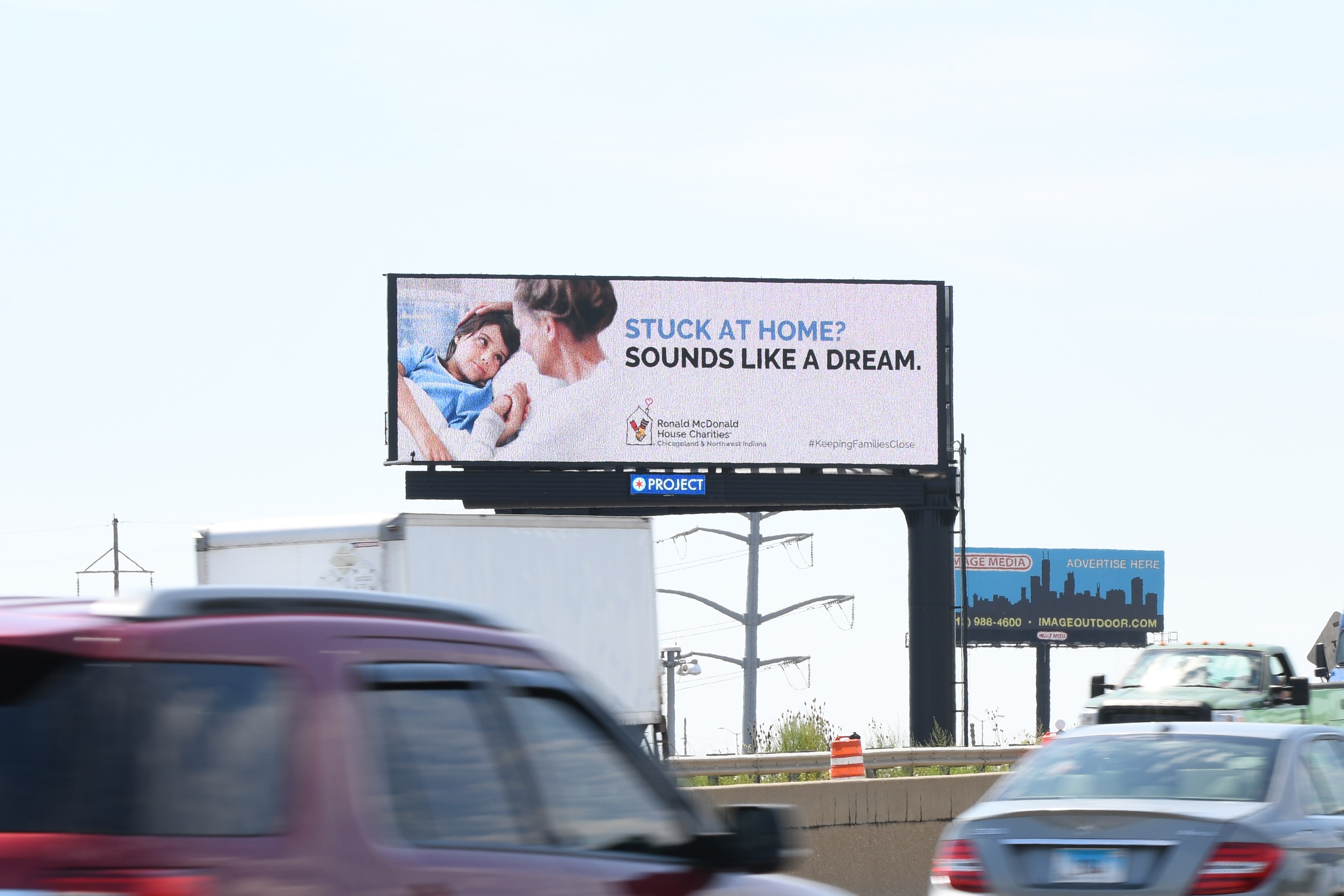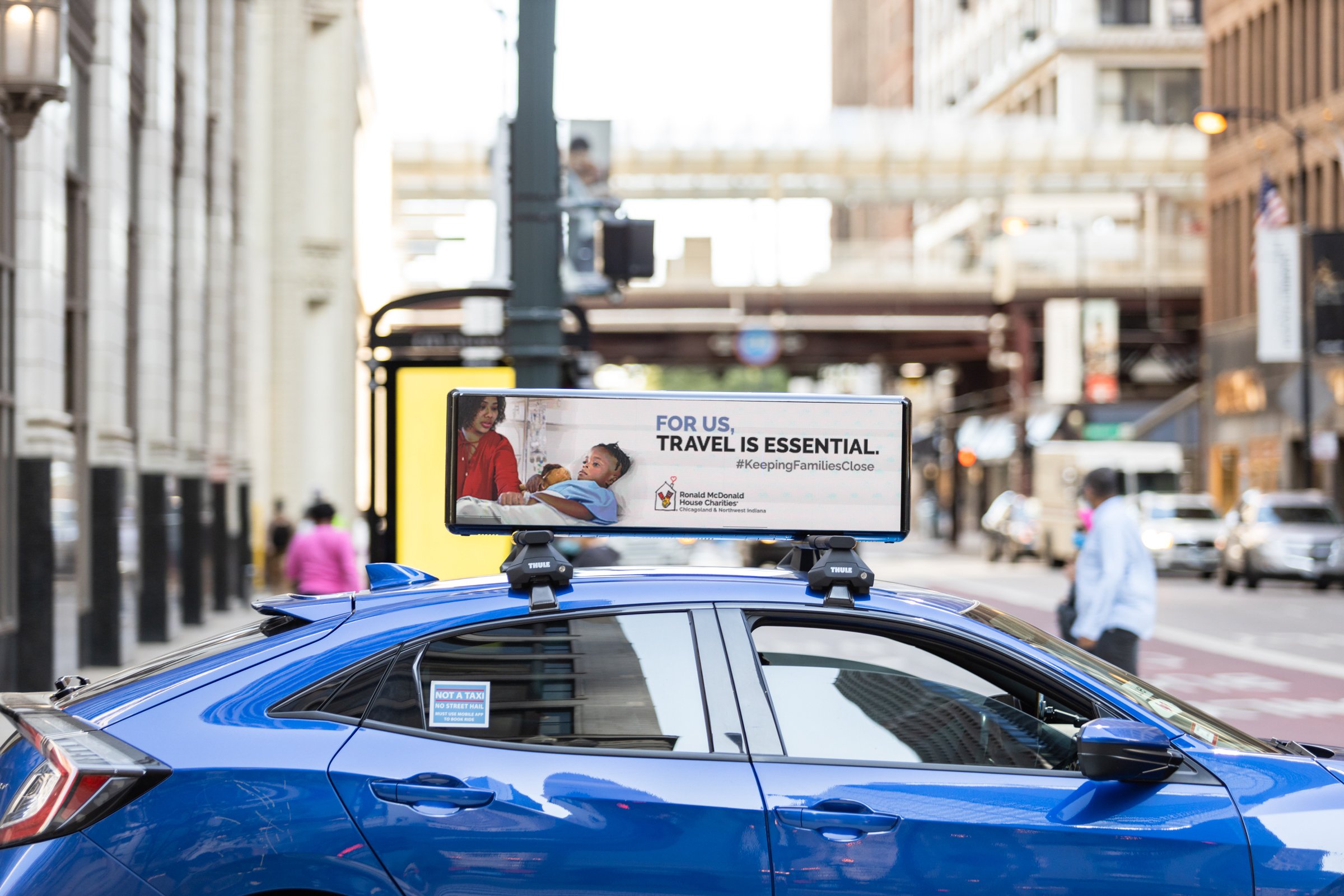
As advertisers, we try to reach as many people as possible, while still offering a contextually relevant consumer experience. As the global COVID-19 crisis plays out, it can be daunting to think about how brands can continue to reach their audience, and how to do so in a way that feels appropriate.
Brands and advertisers might also be left wondering where their audiences are right now, outside of their homes. With traffic down in every major U.S. market, it’s hard to see the incentive in taking over city centers with large-scale out-of-home messages that might not be seen. Even Chrissy Teigen is concerned her billboard on Sunset Boulevard won’t get the eyes it deserves but has received over 500K engagements on Instagram. However, the reality is quite the contrary.

OOH Exposure Has Shifted
While many people are no longer heading into work, out to events or congregating in large numbers in city centers, they are, in fact, taking to their neighborhoods and communities just as often, if not more. As such, this is a crucial time for brands to stay active in the public space. In the short term, audience movements may have shrunk, which is for the best, but people are still active and perhaps, more engaged than ever.
Brands can show solidarity with their audience and reach them on a more personal level. We’re social creatures by nature, so we’re meant for movement and fresh air. People are still out and about, keeping safe distances, and staying active in their communities.
Hyperlocal is the New High Profile
Hyperlocal, simply put, is the practice of targeting an audience in a highly-specific geographic location — i.e. your local park, main street, or grocery store.
This is an especially exciting way to use out-of-home right now for one simple reason: the traditional experience of OOH has completely changed in our current situation. It is normally seen as something to be experienced concurrently, with billboards that reach many people simultaneously, and on a large scale. But, with the seclusion of audiences to their homes and neighborhoods, hyperlocal, which features types of OOH media like bus shelters, street furniture, transit, package inserts, kiosks, and more, all have a unique ability to reach audiences on a more personal level.
Using Data as a Compass
While targeting your OOH advertising to the hyperlocal consumer might be your objective, the inspiration for your solution should be in the data, and if there’s anything we’ve learned since the beginning of this crisis, it’s that audience movement has totally changed.
From our recent research around the impact of COVID-19 on OOH and its effects on exposure, we found that foot traffic has experienced dramatic decreases compared to the same time last year, which is of course to be expected. Airports, restaurants, hotels, malls and more are all decreasing in foot traffic. However, certain essential businesses have seen very encouraging increases including supermarkets, gas stations and general merchandise stores.
In addition, traffic is dramatically down on major commuter freeways and routes, but both neighborhood traffic and OOH exposure have surged over the last month. This has resulted in a dramatic change in popular hot spots for OOH.
So, What’s Next for Out-of-Home?
As this becomes the new normal for OOH, advertisers should focus on impactful encounters in hyperlocal areas and neighborhoods that align brand objectives with business outcomes. Don’t stop your campaigns, but ensure messaging remains relevant, yet sensitive to consumer emotions as we navigate this new world. Utilize OOH to maintain brand affinity, while letting your customers know that you’re staying strong in their community.
It’s more important than ever for brands to stay the course and be connected to their audiences in a meaningful and thoughtful way. Get into the neighborhoods. The people are there. OOH is there. Your brand should be there, too.
This article originally appeared in OAAA.
Lorem ipsum dolor sit amet, consectetur adipiscing elit

Don't worry—we won't share your information.